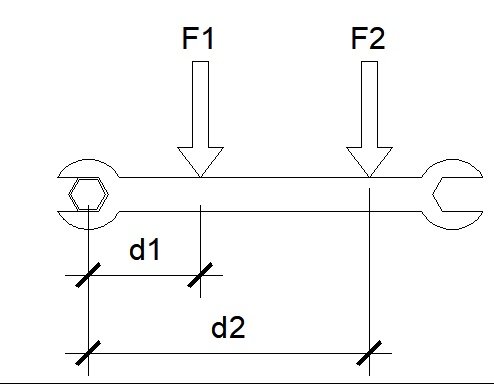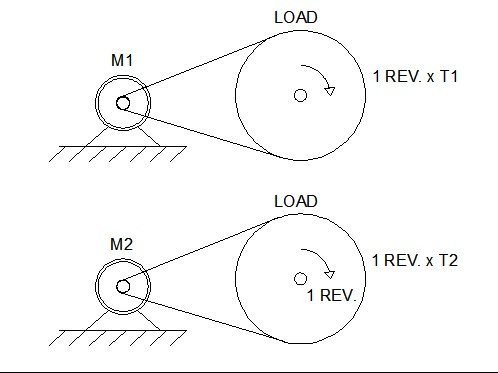The torque of a motor is the moment of force that a motor can deliver to the mechanical load connected to its axis.
Torque is defined with the product of force by distance:
M = F x d.
Where:
M = Torque
F = Applied force
D = Distance from the turning point to the point where it is applied to force.
![torque.jpg]
Fig. 6.
( )
)
Figure 6 shows two equal forces trying to rotate a screw by a tool. Since the arm or distance (d2) of application of the force F2 to the point where the screw is located is greater than the distance (d1) of application of force F1 to the same point, it is said that F2 applies a greater torque than the one applied by F1.
If F1 = F2 and d2> d1, given that M = F x d. Then it turns out that M2> M1.
The power of the motor is the speed with which the motor can deliver the torque to the load.
P = M x w.
Where:
P = Power
M = Torque
w = Angular velocity (Rad / Seg).

Fig.7
For example, a motor M1 of power P1 that moves a mill and takes a time T1 to reach a complete rotation of the wheel of the mill and a motor M2 of power P2 that moves the mill and takes a time T2 to reach a complete rotation.
Although the two engines manage to turn the wheel a full turn in equal conditions, it is said that M1 is more powerful than M2 if the time it takes M1 to turn the wheel is less than the time that M2 produces the same turn on the wheel.
If T2> T1, given that P = M x w. Then it turns out that P1> P2.